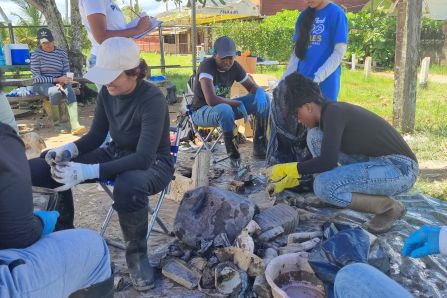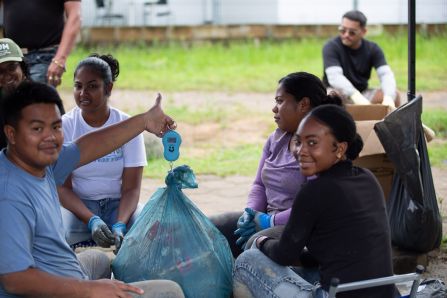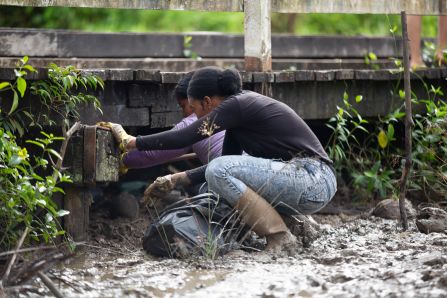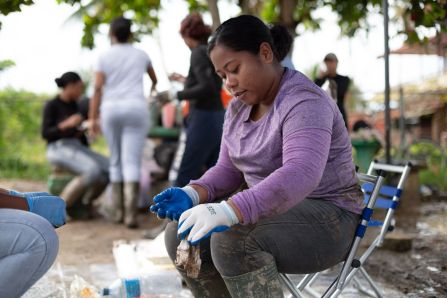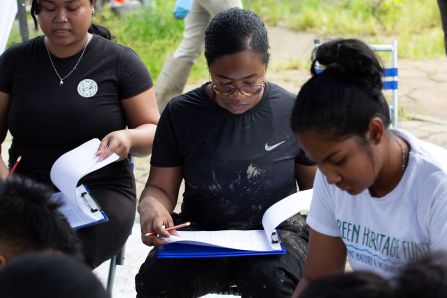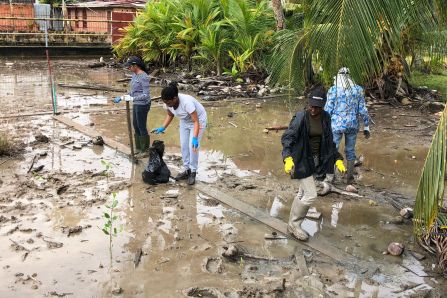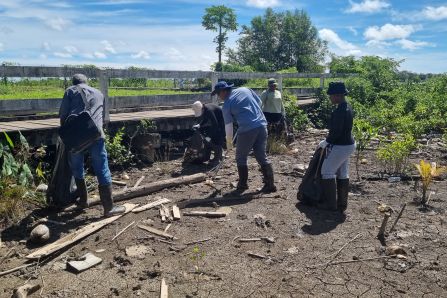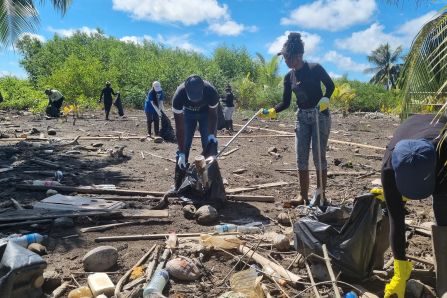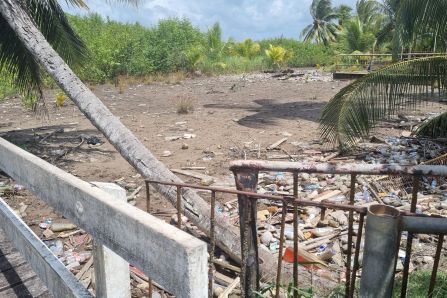Baseline Clean-up and Sampling at the Demonstration Site 2-
Leonsberg Jetty, Suriname
Tracking Waste at Demonstration Sites: Insights from Cleanup and Sampling Activities
Between the months of March and June, a cleanup and waste characterization studies were carried out at two demonstration sites: Site 1 (Behind the Vreedzaam Market) and Site 2 (Leonsberg Jetty). These studies aimed to identify the types and quantities of waste, evaluate dumping behaviors, and guide future waste management interventions.
Demonstration Site 1 – Behind the Vreedzaam Market
The baseline study at Site 1 recorded 275.34 kg of waste across 43 bags collected from six zones. The waste mainly consisted of plastics (consumer and daily-use), organic market waste, and burned debris. Repeated dumping and open burning of waste were identified as significant environmental concerns, worsened by erosion that spreads waste into the river.
Follow-up cleanups confirmed continued dumping, particularly in Zones 5 and 6, and revealed shifting waste patterns. After successive cleanups, waste levels dropped to 97.03 kg at the final measurement, though dumping outside the study area increased. Lessons learned highlighted the need for improved volunteer recruitment, safety protocols, and efficient data collection processes.
Demonstration Site 2 – Leonsberg Jetty
The baseline cleanup at Site 2 covered a 160 m² area and collected 45.54 kg of waste. Subsequent monitoring indicated relatively low waste accumulation but presented logistical challenges due to muddy terrain and heavy rains. After washing and sorting, the first measurement collected 13.01 kg of waste, and the final measurement collected 10.05 kg. Waste composition at this site was dominated by consumer plastics, wood, and glass, suggesting sources linked to fishing and tourism.
Key Insights and Lessons
Waste dumping patterns are persistent, often relocating outside cleaned zones.
Burning of waste remains common, adding environmental and safety hazards.
Weather and terrain significantly impact cleanup logistics.
Volunteer turnout is crucial for efficiency, highlighting the need for stronger community engagement.
Improved data protocols and field preparation, including protective equipment and multiple weighing scales, enhance efficiency and safety.
These studies provide valuable data for understanding urban littering behavior and will inform future interventions for better waste management and community awareness.

